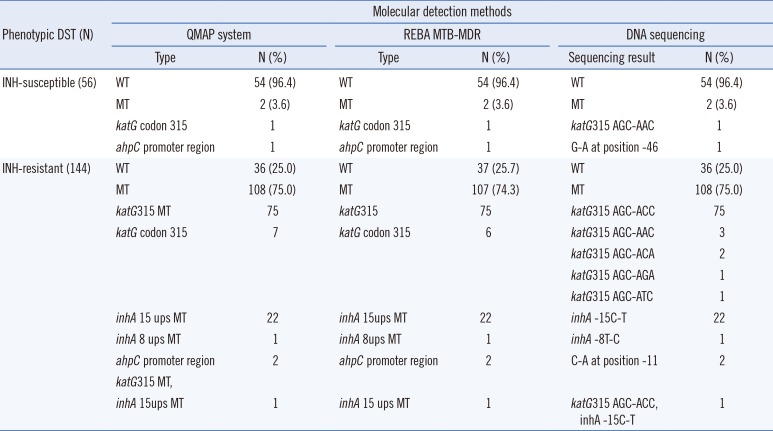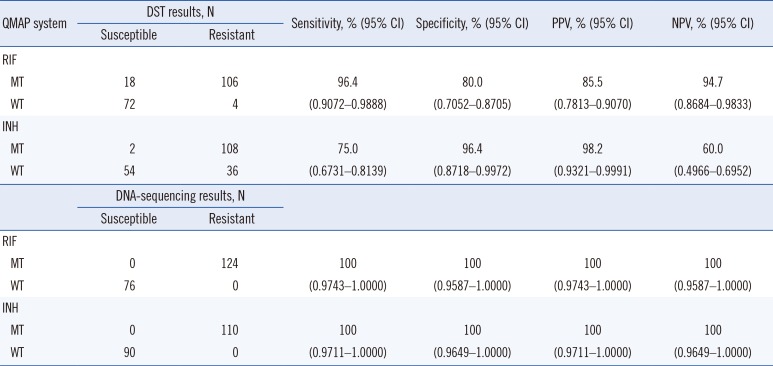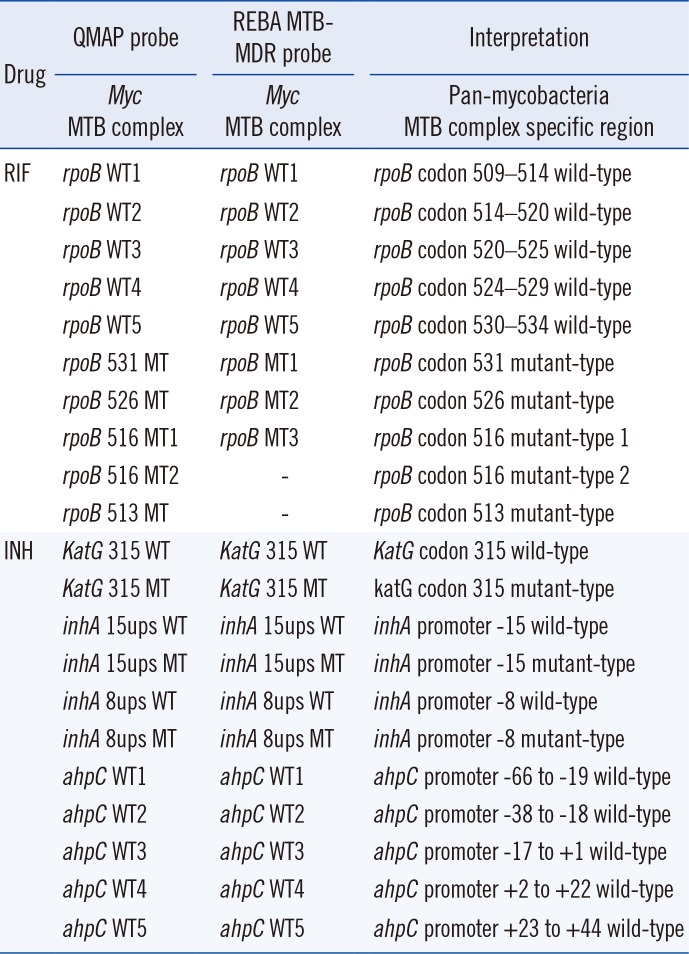1. Zaman K. Tuberculosis: a global health problem. J Health Popul Nutr. 2010; 28:111–113. PMID:
20411672.
2. Bae E, Im JH, Kim SW, Yoon NS, Sung H, Kim MN, et al. Evaluation of combination of BACTEC mycobacteria growth indicator tube 960 system and Ogawa media for mycobacterial culture. Korean J Lab Med. 2008; 28:299–306. PMID:
18728380.
3. Parsons LM, Somoskövi A, Gutierrez C, Lee E, Paramasivan CN, Abimiku A, et al. Laboratory diagnosis of tuberculosis in resource-poor countries: challenges and opportunities. Clin Microbiol Rev. 2011; 24:314–350. PMID:
21482728.
4. Rageade F, Picot N, Blanc-Michaud A, Chatellier S, Mirande C, Fortin E, et al. Performance of solid and liquid culture media for the detection of
Mycobacterium tuberculosis in clinical materials: meta-analysis of recent studies. Eur J Clin Microbiol Infect Dis. 2014; 33:867–870. PMID:
24760249.
5. Blakemore R, Story E, Helb D, Kop J, Banada P, Owens MR, et al. Evaluation of the analytical performance of the Xpert MTB/RIF assay. J Clin Microbiol. 2010; 48:2495–2501. PMID:
20504986.
6. Skenders GK, Holtz TH, Riekstina V, Leimane V. Implementation of the INNO-LiPA Rif. TB® line-probe assay in rapid detection of multidrug-resistant tuberculosis in Latvia. Int J Tuberc Lung Dis. 2011; 15:1546–1552. PMID:
22008771.
7. Teo J, Jureen R, Chiang D, Chan D, Lin R. Comparison of two nucleic acid amplification assays, the Xpert MTB/RIF assay and the amplified
Mycobacterium Tuberculosis Direct assay, for detection of
Mycobacterium tuberculosis in respiratory and nonrespiratory specimens. J Clin Microbiol. 2011; 49:3659–3662. PMID:
21865419.
8. Singhal R, Myneedu VP, Arora J, Singh N, Sah GC, Sarin R. Detection of multi-drug resistance & characterization of mutations in
Mycobacterium tuberculosis isolates from North-Eastern States of India using GenoType MTBDR
plus assay. Indian J Med Res. 2014; 140:501–506. PMID:
25488443.
9. Sharma SK, Kohli M, Yadav RN, Chaubey J, Bhasin D, Sreenivas V, et al. Evaluating the diagnostic accuracy of Xpert MTB/RIF assay in pulmonary tuberculosis. PLoS One. 2015; 10:e0141011. PMID:
26496123.
10. Rahman A, Sahrin M, Afrin S, Earley K, Ahmed S, Rahman SM, et al. Comparison of Xpert MTB/RIF assay and GenoType MTBDR
plus DNA probes for detection of mutations associated with rifampicin resistance in
Mycobacterium tuberculosis. PLoS One. 2016; 11:e0152694. PMID:
27054344.
11. Seifert M, Ajbani K, Georghiou SB, Catanzaro D, Rodrigues C, Crudu V, et al. A performance evaluation of MTBDR
plus version 2 for the diagnosis of multidrug-resistant tuberculosis. Int J Tuberc Lung Dis. 2016; 20:631–637. PMID:
27084817.
12. Kim LN, Kim M, Jung K, Bae HJ, Jang J, Jung Y, et al. Shape-encoded silica microparticles for multiplexed bioassays. Chem Commun (Camb). 2015; 51:12130–12133. PMID:
26125980.
13. Wang HY, Uh Y, Kim S, Lee H. Performance of the Quantamatrix Multiplexed Assay Platform system for the differentiation and identification of
Mycobacterium species. J Med Microbiol. 2017; 66:777–787. PMID:
28604333.
14. Wang HY, Uh Y, Kim S, Lee H. Quantamatrix Multiplexed Assay Platform system for direct detection of bacteria and antibiotic resistance determinants in positive blood culture bottles. Clin Microbiol Infect. 2017; 23:333.e1–333.e7.
15. Abbadi SH, Sameaa GA, Morlock G, Cooksey RC. Molecular identification of mutations associated with anti-tuberculosis drug resistance among strains of
Mycobacterium tuberculosis. Int J Infect Dis. 2009; 13:673–678. PMID:
19138546.
16. Tessema B, Beer J, Emmrich F, Sack U, Rodloff AC. Analysis of gene mutations associated with isoniazid, rifampicin and ethambutol resistance among
Mycobacterium tuberculosis isolates from Ethiopia. BMC Infect Dis. 2012; 12:37. PMID:
22325147.
17. Luo T, Zhao M, Li X, Xu P, Gui X, Pickerill S, et al. Selection of mutations to detect multidrug-resistant
Mycobacterium tuberculosis strains in Shanghai, China. Antimicrob Agents Chemother. 2010; 54:1075–1081. PMID:
20008778.
18. Slayden RA, Barry CE 3rd. The genetics and biochemistry of isoniazid resistance in
Mycobacterium tuberculosis. Microbes Infect. 2000; 2:659–669. PMID:
10884617.
19. Jin J, Zhang Y, Fan X, Diao N, Shao L, Wang F, et al. Evaluation of the GenoType® MTBDR
plus assay and identification of a rare mutation for improving MDR-TB detection. Int J Tuberc Lung Dis. 2012; 16:521–526. PMID:
22325117.
20. Yadav RN, Singh BK, Sharma SK, Sharma R, Soneja M, Sreenivas V, et al. Comparative evaluation of GenoType MTBDRplus line probe assay with solid culture method in early diagnosis of multidrug resistant tuberculosis (MDR-TB) at a tertiary care centre in India. PLoS One. 2013; 5:e72036.
21. Causse M, Ruiz P, Gutierrez JB, Vaquero M, Casal M. New Anyplex™ II MTB/MDR/XDR kit for detection of resistance mutations in M. tuberculosis cultures. Int J Tuberc Lung Dis. 2015; 19:1542–1546. PMID:
26614199.
22. Hristea A, Otelea D, Paraschiv S, Macri A, Baicus C, Moldovan O, et al. Detection of
Mycobacterium tuberculosis resistance mutations to rifampin and isoniazid by real-time PCR. Indian J Med Microbiol. 2010; 28:211–216. PMID:
20644308.
23. Chien JY, Chang TC, Chiu WY, Yu CJ, Hsueh PR. Performance assessment of the BluePoint MycoID
plus kit for identification of
Mycobacterium tuberculosis, including rifampin- and isoniazid-resistant isolates, and nontuberculous mycobacteria. PLoS One. 2015; 10:e0125016. PMID:
25938668.
24. Bai Y, Wang Y, Shao C, Hao Y, Jin Y. GenoType MTBDR
plus Assay for rapid detection of multidrug resistance in
Mycobacterium tuberculosis: a meta-analysis. PLoS One. 2016; 11:e0150321. PMID:
26934724.










 PDF
PDF ePub
ePub Citation
Citation Print
Print



 XML Download
XML Download